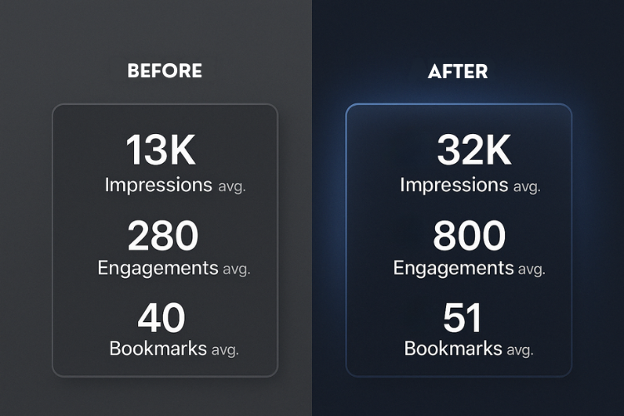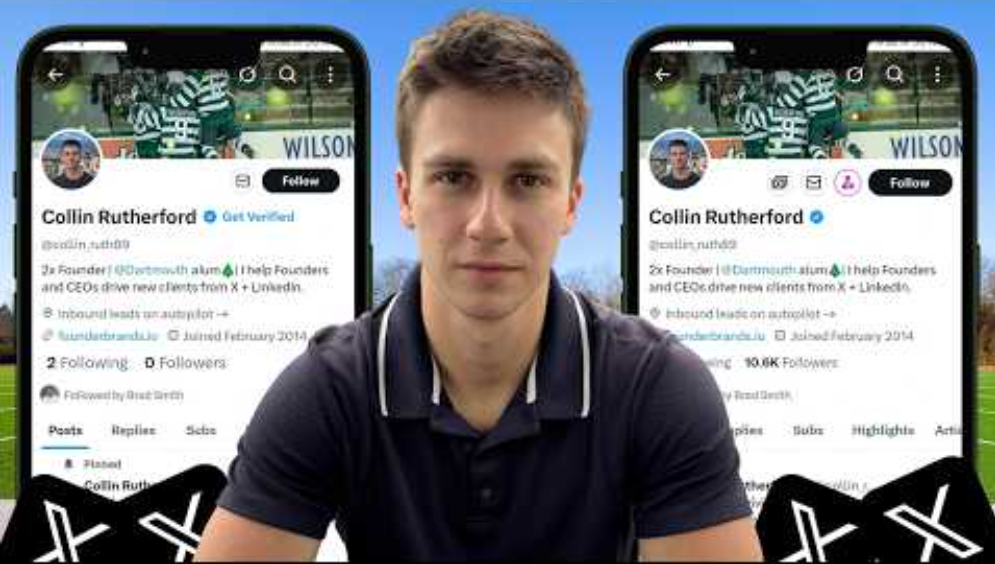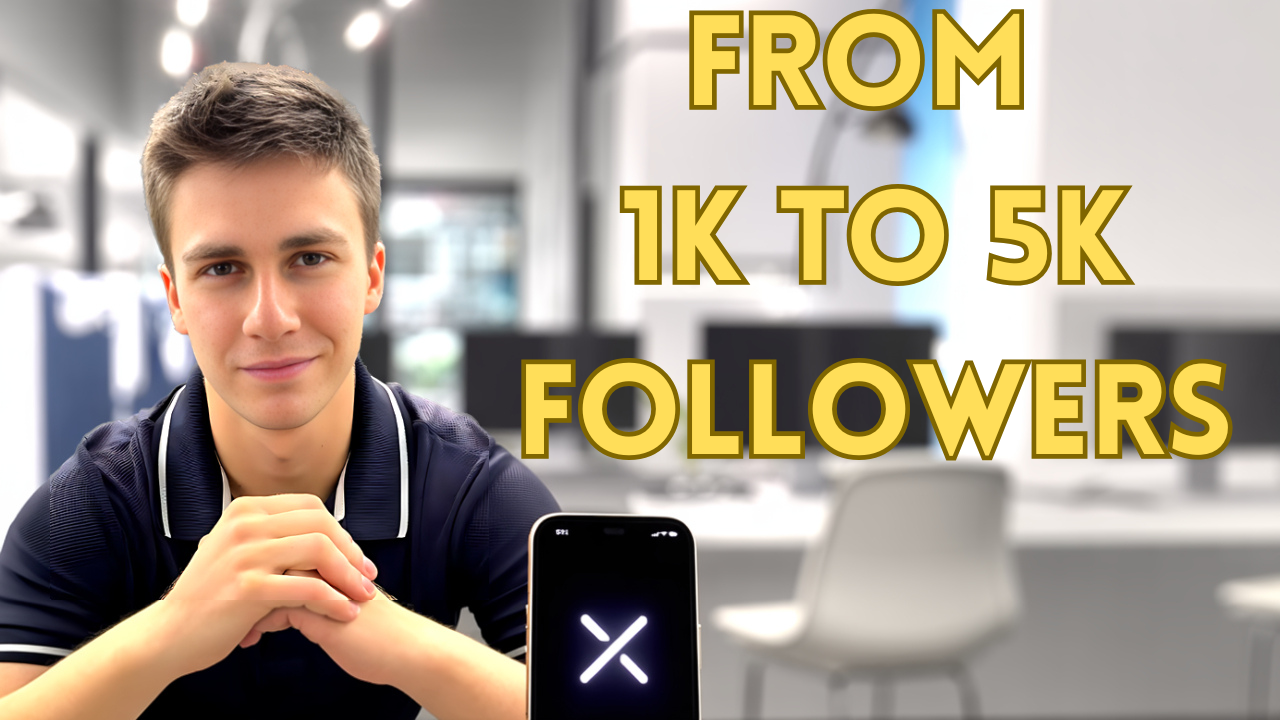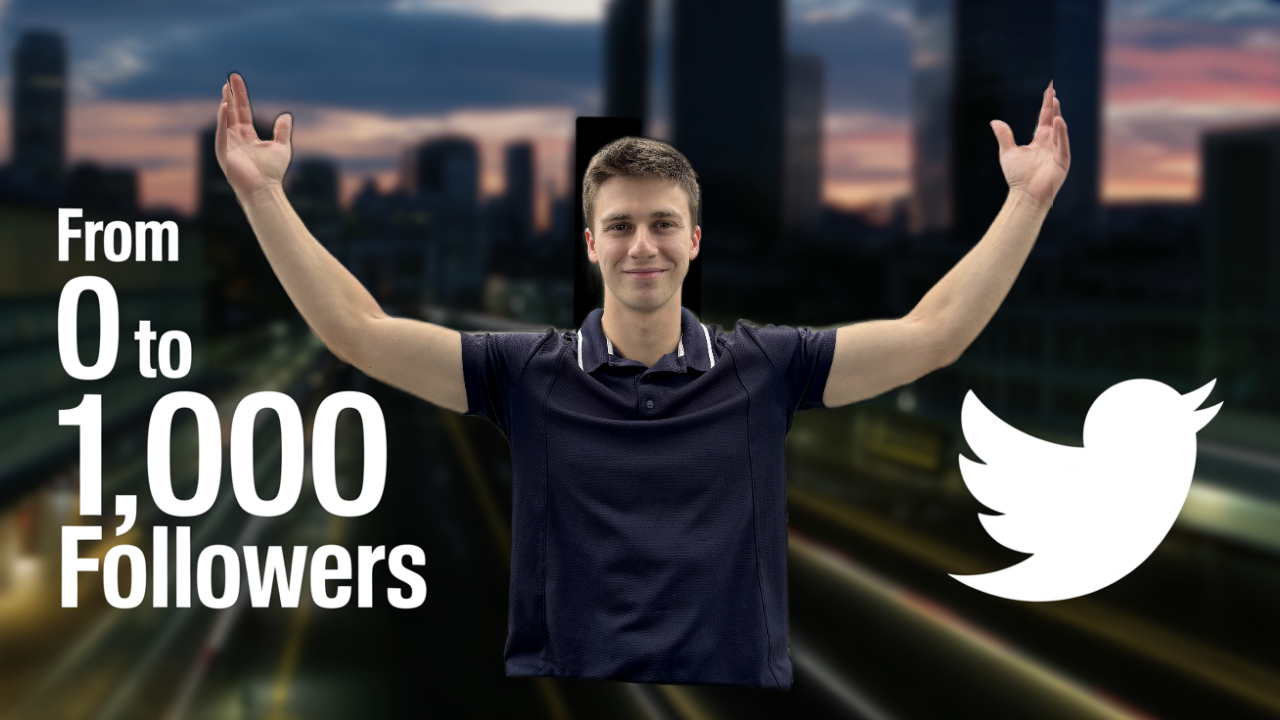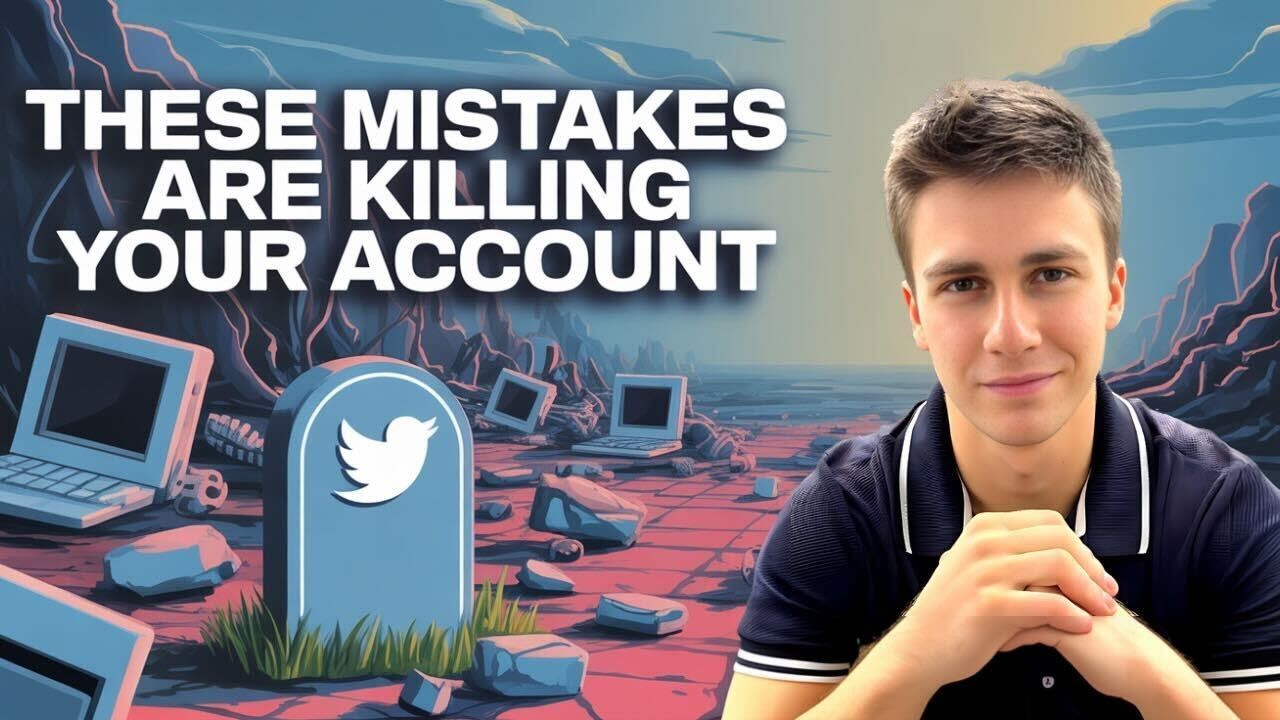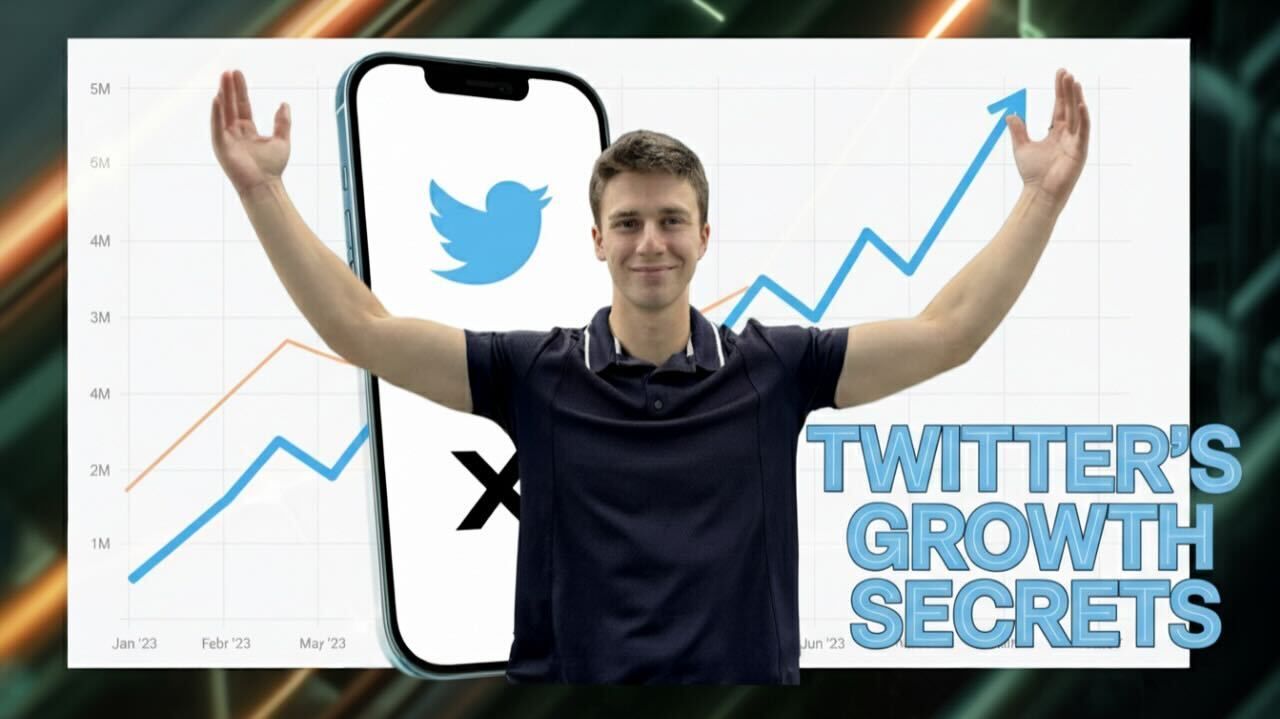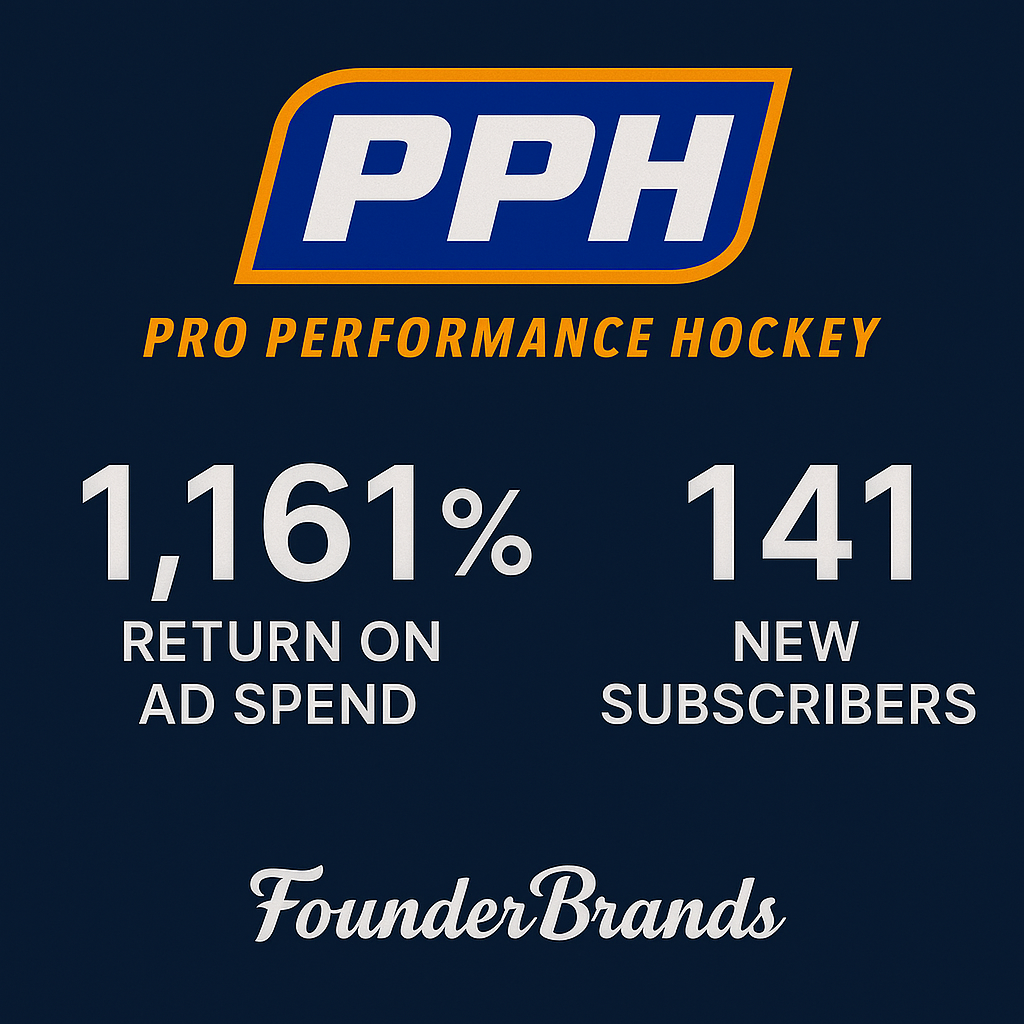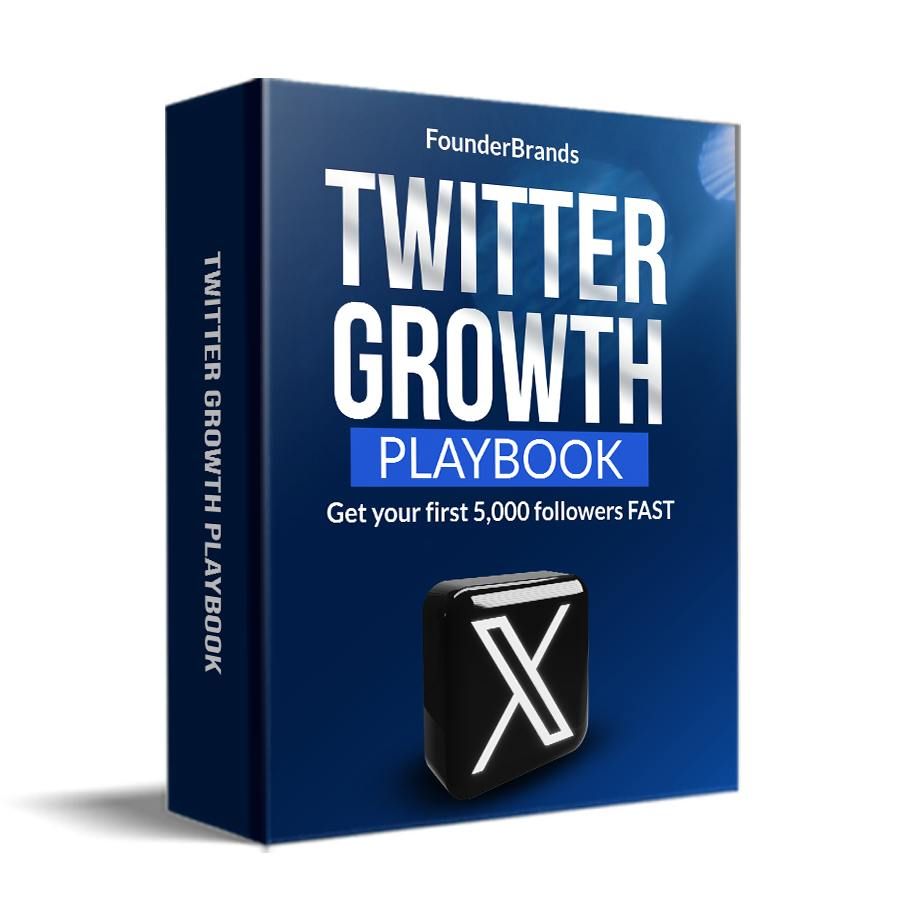How To Grow A Personal Brand On LinkedIn (Step-by-Step)
Common Questions People Ask Me About Growing on LinkedIn
How to build a personal brand on LinkedIn that attracts clients?
Start by optimizing your profile to clearly state who you help and the results you deliver. Add a professional banner, story-driven About section, and featured content that shows your expertise. Post consistently with a mix of educational, personal, and proof-based content so people trust and remember you. Focus on being human, not corporate.
How to write LinkedIn posts that get engagement and build authority?
Use a simple structure — hook, lesson, takeaway. Lead with a relatable or bold opening line, share something educational or from experience, and end with a clear point or question. Post 3–4 times per week and rotate between authority, personality, engagement, and client success content. Always add value first and use your authentic voice.
How to get leads and clients from LinkedIn without using ads?
Engage before you sell. Comment on posts from your target audience daily, start genuine conversations, and build relationships over a few weeks. Once there’s rapport, reach out through DMs with value — a helpful resource, case study, or insight — before mentioning what you offer. Consistency and authenticity drive more inbound leads than cold messages ever will.
How to use comments and DMs to build relationships on LinkedIn?
Spend 20–30 minutes a day leaving thoughtful comments that add value to others’ posts. Avoid generic replies — write something specific or offer insight. After two to four weeks of engagement, send a friendly DM referencing something from their content. Keep it personal, not salesy. Relationships built this way often turn into long-term clients.
Author: Collin Rutherford
Company: FounderBrands
How to Build a Personal Brand and Get Leads on LinkedIn
I love LinkedIn.
I know, that’s not something you hear very often. But the truth is, LinkedIn is one of the most underrated places to grow your business. I’ve built my brand and driven a consistent flow of clients directly from the platform — all without ads.
If you’re a business owner, consultant, or service provider who wants to grow organically, this is your guide. In this post, I’m going to show you step by step how to build your personal brand, create content that attracts clients, and use engagement to drive real leads.
By the way, my name is Colin Rutherford, founder of Founder Brands, where we help business owners grow their business through their personal brand. But more on that later — let’s dive into the framework.
Step 1: Make the Mindset Shift
The first thing you need to understand is this, people buy from people, not faceless companies.
Think about it — when’s the last time you followed a corporate brand on social media just for fun? Most people don’t. Company accounts are often sterile, boring, and impersonal.
What people do follow are visible founders — people who share their expertise, stories, and beliefs in a way that feels real. When you build a personal brand, you build trust. That trust turns into leads.
So the mindset shift is simple, stop hiding behind your company logo and start building you.
Step 2: Optimize Your Profile for Conversion
Your LinkedIn profile is your landing page. It’s the first impression people get, so you need to make it count.
Here’s how to do it step by step:
1. Headline:
Use this formula, what you do + the outcome you help people achieve.
Example, “I help B2B service founders drive organic leads from LinkedIn.”
It’s clear, specific, and focused on value.
2. Banner:
You have two options, business-related or personality-driven.
A business banner might include your logo, tagline, and a call to action, like “Get a Free Audit.”
A personality banner could showcase who you are — maybe a professional photo, or something that represents your story.
3. About Section:
You can either tell your story or highlight your achievements.
If you’re new to the platform, tell your story. People connect with journeys. If you’re established, don’t be afraid to brag — you’ve earned it.
4. Featured Section:
Show off your best work. Add case studies, video testimonials, or valuable free resources that highlight your expertise.
Step 3: Create a Content Strategy That Builds Trust
You can’t grow on LinkedIn without posting consistently, but it’s not about posting random updates. You need a strategy.
There are four types of content that perform best:
1. Authority Content
Teach your audience something. Share tactical insights, lessons, and frameworks they can apply right away.
2. Personality Content
Show your human side. Talk about your experiences, lessons from your journey, or behind-the-scenes moments that make your brand relatable.
3. Engagement Content
These are your “conversation starters.” Ask questions, share opinions, or post hot takes that spark dialogue. This boosts visibility and draws new followers.
4. Client Success Stories
Social proof is powerful. Share screenshots, testimonials, or stories about client results. This is how you attract leads who are ready to buy.
Rotate these four types of content each week. It keeps your profile interesting, authentic, and full of value.
Step 4: Use the Engagement System (The “Reply Guy” Strategy)
Here’s the secret most people miss, commenting builds faster than posting.
If you want to grow quickly, spend time every day engaging with other people’s posts. Comment thoughtfully on content from industry leaders, potential clients, and peers.
This does three things,
- Builds reciprocity — people you comment on will comment back.
- Adds value before you ever pitch.
- Gets your name in front of larger audiences.
When I was in growth mode, I spent 30 minutes a day leaving 30 thoughtful comments. That small habit led to massive exposure and real relationships.
Step 5: Turn Relationships into Leads
Engagement is great, but relationships drive revenue.
Once you’ve been commenting on someone’s content for two to four weeks, start a direct conversation. Don’t pitch right away. Build the relationship first.
Example message,
“I noticed your post about [topic]. I really liked your point about [specific idea]. Have you considered [insight or suggestion]?”
Later, once you’ve built trust, you can move into sharing what you do,
“I shared a post on how we helped a client achieve [result]. Would that be helpful to you?”
Then, invite them to connect further,
“I’d love to chat about how this might work for your business. Does this time work for you, or feel free to pick one using this link.”
Keep it personal and conversational. The goal is to build relationships, not send cold DMs.
Step 6: Recap and Take Action
To recap, here’s your full LinkedIn growth system:
- Make the mindset shift — people buy from people.
- Optimize your profile for clarity and value.
- Post consistently with a 4-part content strategy.
- Engage every day using the “Reply Guy” approach.
- Build relationships and move them to DMs with genuine value.
If you do this consistently, you’ll start building an audience, getting inbound leads, and turning LinkedIn into a daily client acquisition machine.
Final Thoughts
LinkedIn is no longer a resume platform. It’s the easiest place to grow organically, build trust, and drive real business.
At Founder Brands, we help business owners do exactly this — turn their personal brands into growth engines. If you’re ready to stop blending in and start standing out, this framework is the best place to begin.
For more step-by-step marketing breakdowns like this, subscribe and keep learning how to grow your brand through authentic content and connection.
How long does it take to see results from engagement?
You should start seeing follower growth within the first week of consistent daily engagement. The key is commenting on posts from accounts with engaged audiences who match your target market. Focus on quality comments that add value rather than generic responses.
What type of content performs best when starting out?
Personal stories, industry insights, and educational content perform well when you're building from zero. Share your authentic experiences and lessons learned rather than trying to sound like an expert immediately.
Should I engage with competitors or complementary businesses?
Engage with both, but focus more on complementary businesses where collaboration is possible. Comment thoughtfully on competitor content, but prioritize building relationships with accounts that could become referral partners or collaborators.
How do I know if my engagement strategy is working?
Track your follower growth weekly and monitor profile visits in your analytics. If you're getting 5-10 new followers per week through consistent engagement, you're on the right track.
What's the biggest mistake people make with the pinned post strategy?
They pin the same type of content repeatedly instead of testing different post formats. Experiment with educational posts, personal stories, and promotional content to see what generates the highest engagement when pinned.

